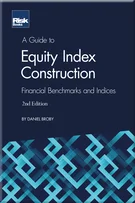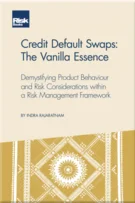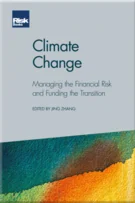Introduction
Laurent Birade, Masha Muzyka, Yashan Wang and Jing Zhang
Introduction
Introduction
An overview of CECL: setting the context
Outlining the most impactful assumptions and challenges under CECL: an auditor’s view
Outlining the most impactful assumptions and challenges under CECL: a banker’s view
A banking industry perspective on key CECL decisions
Challenges and solutions for wholesale portfolios
Challenges and solutions for retail mortgage portfolios
Challenges and solutions for retail credit card portfolios
Challenges and solutions for student loans
Challenges and solutions for securities portfolios
The evolution of purchased loan accounting: from FAS 91 to the CECL transition
Challenges and solutions for qualitative allowance
Challenges and solutions: an auditor’s point of view
Early view of CECL integration into stress testing: practical approaches
Too many cooks in the kitchen: mastering the art of managing CECL volatility
Beyond CECL: rethinking bank transformation
Data collision: efficient lending under CECL
Cutting through the hype: how CECL is impacting investor views of procyclicality, credit analysis and M&A
Concentration risk: the CECL magnifying glass
Closing thoughts
Reserving for credit loss is one of the most critical aspects of a financial institution’s accounting practice. Its objective is to provide financial statement users with decision-useful information about the potential credit losses on financial instruments. Reserve measurement affects both the balance sheet and income statement. It impacts earnings, capital, dividends and bonuses, and attracts the attention of stakeholders — from the board of directors and regulators to equity investors. Following the 2007–09 global financial crisis, it was obvious that the accounting standard methodology for setting aside reserves — the “incurred loss model” (ILM) — failed to properly address timely adjustment of reserve levels, known as allowance for loan and lease losses (ALLL). The ILM relies on current and historical conditions to determine the level of ALLL, and as such, during the crisis, ALLL did not account for the economy’s negative outlook, which was apparent. As a result, reserves were not adequately representing the management’s expectation of credit losses, creating situations where institutions were building reserves at the same time they were booking actual charge-offs in excess
Copyright Infopro Digital Limited. All rights reserved.
As outlined in our terms and conditions, https://www.infopro-digital.com/terms-and-conditions/subscriptions/ (point 2.4), printing is limited to a single copy.
If you would like to purchase additional rights please email info@risk.net
Copyright Infopro Digital Limited. All rights reserved.
You may share this content using our article tools. As outlined in our terms and conditions, https://www.infopro-digital.com/terms-and-conditions/subscriptions/ (clause 2.4), an Authorised User may only make one copy of the materials for their own personal use. You must also comply with the restrictions in clause 2.5.
If you would like to purchase additional rights please email info@risk.net










